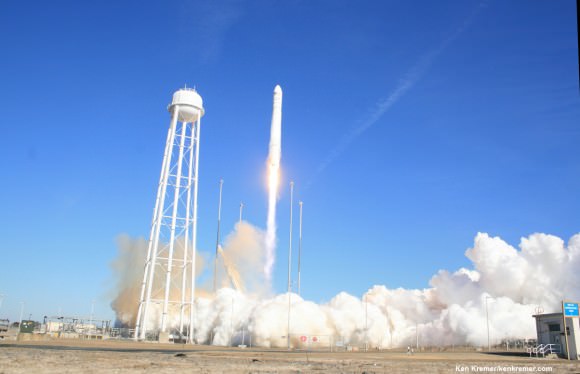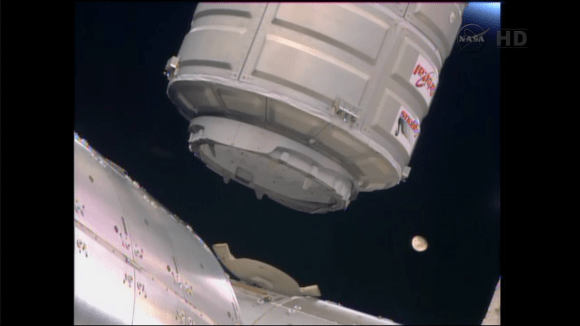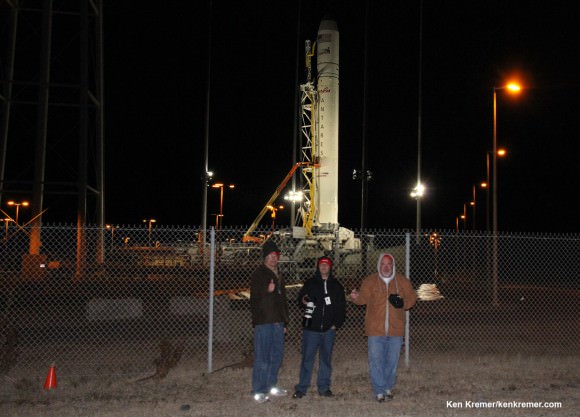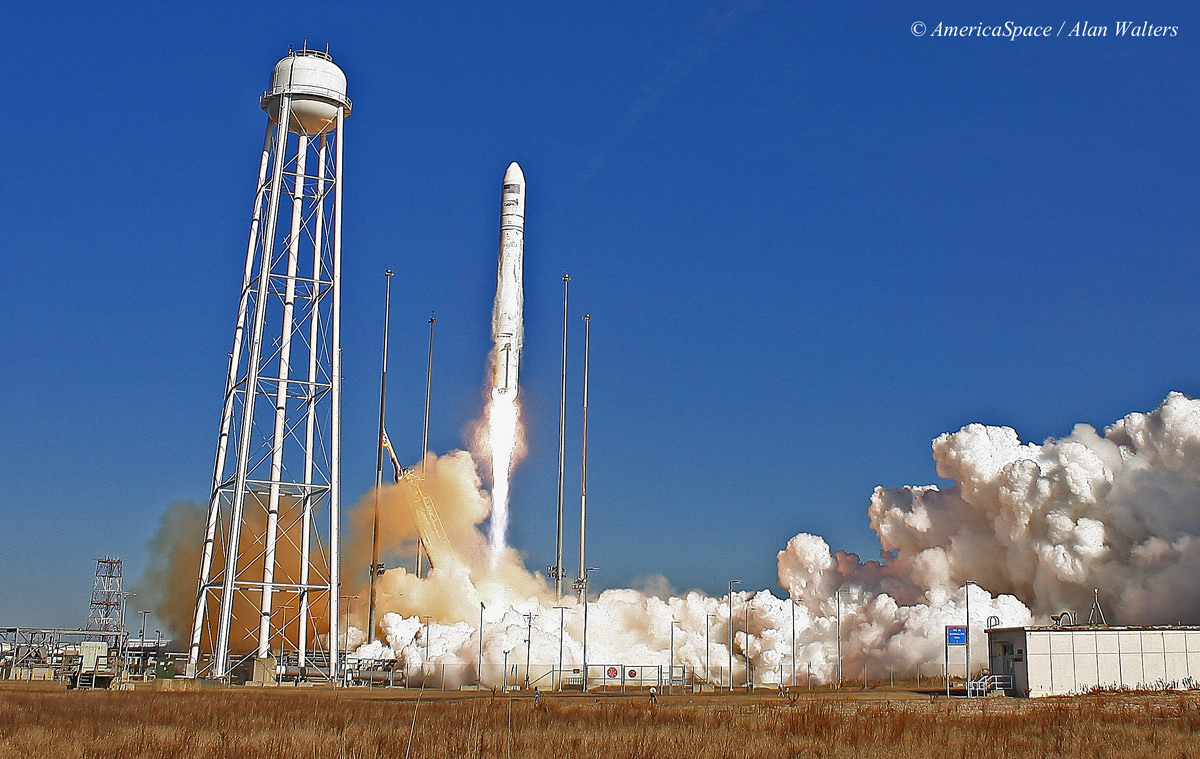Video caption: Antares ORB-1 Launch Pad Camera on south side of pad 0A being hammered from Orbital Sciences Antares rocket launch at 1:07 p.m. EST on January 9th 2014, from NASA’s Wallops Flight Facility, VA, carrying the Cygnus resupply spacecraft to the ISS. Credit: Mike Killian/Jeff Seibert/Mike Barrett/AmericaSpace.com/MikeKillianPhotography.com/Wired4Space.com
What’s it like to be standing at a rocket launch pad? Especially when it’s a private spaceship embarking on a history making flight to the space station that’s blasting the opening salvos of the new ‘commercial space era’ heard round the world?
Thrilling beyond belief!
And what’s it like to be standing at the launch pad when the engines ignite and the bird begins soaring by guzzling hundreds of thousands of pounds of burning fuel, generating intense heat and deadly earsplitting noise?
Well for a first-hand, up-close adventure to hear the deafening sound and feel the overwhelming fury, I’ve collected a gallery of videos from the Jan. 9 blastoff of the privately built Antares rocket from NASA’s Wallops Flight Facility, VA on a historic mission to the International Space Station (ISS).
The videos were created by a team of space journalists from a variety of space websites working together to create the best possible products for everyone’s enjoyment- including Alan Walters, Mike Killian, Matt Travis, Jeff Seibert, Mike Barrett and Ken Kremer representing AmericaSpace, Zero-G News, Wired4Space and Universe Today.
Video caption: Close up camera captures Antares liftoff carrying the Cygnus Orb-1 ISS resupply spacecraft. This was composed of 59 images taken by a Canon Rebel xti and 18 mm lens of the Antares Orbital 1 launch to the ISS on Jan. 9, 2013 at NASA Wallops Island, VA. Credit: Ken Kremer/Alan Walters/Matthew Travis/kenkremer.com
Wallops is located along the eastern shore of Virginia at America’s newest space port.
Because the launch pad is near the most heavily populated ares of the US, millions have a chance to view the launch along the US eastern seaboard.
And the pad sits almost directly on the Atlantic Ocean, so you can hear the waves constantly crashing on shore.
Well we always want to be as close as possible. But as you’ll see, it’s really not a very good idea to be right there.
North Side Launch Pad Camera Captures Antares Rocket Launch With Orbital Sciences Cygnus Orb-1 To ISS on Jan. 9, 2013 from NASA Wallops. A GoPro Hero 2 camera captures the launch of Orbital Sciences Antares rocket carrying the Cygnus spacecraft on the Orb-1 mission to resupply the International Space Station. Credit: Matt Travis/Mike Killian/MikeKillianPhotography.com/ZeroGnews.com/AmericaSpace.com
Virtually every camera on the south side got creamed and was blown over by the approaching fiery exhaust fury seen in the videos.
Amazingly they continued taking pictures of the exhaust as they were violently hit and flung backwards.
Luckily, as they were knocked over and fell to the ground, the lenses were still facing skyward and snapping away showing the sky and exhaust plume swirling around and eventually dissipating.
Our cameras capture the experience realistically.
We’ve set them up around the north and side sides at NASA’s Wallops Launch Pad 0A on the Mid-Atlantic Regional Spaceport (MARS).

How do the cameras, called remotes, collect the imagery?
They are activated either by sound triggers or timers.
It takes a lot of hard work and equipment and doesn’t always work out as planned.
But the payoff when it does is absolutely extraordinary.
The Jan. 9 blast off of Orbital Sciences’ private Antares booster delivered the firm’s Cygnus Orbital-1 cargo freighter to orbit.

Following a two day orbital chase and an intricate series of orbit raising maneuvers, the Cygnus vessel reached the station on Sunday, Jan. 12, and was berthed by astronauts maneuvering the robot arm at an Earth-facing port on the massive orbiting lab complex.
The Orbital -1 spaceship is conducting the first of 8 operational cargo logistics flights scheduled under Orbital Sciences’ multi-year $1.9 Billion Commercial Resupply Services contract (CRS) with NASA that runs through 2016.
SpaceX likewise has a contract with NASA to deliver cargo to the ISS via their Dragon spaceship. The next SpaceX launch is slated for Feb. 22.
Stay tuned here for Ken’s continuing Orbital Sciences, SpaceX, commercial space, Chang’e-3, LADEE, Mars and more news.



